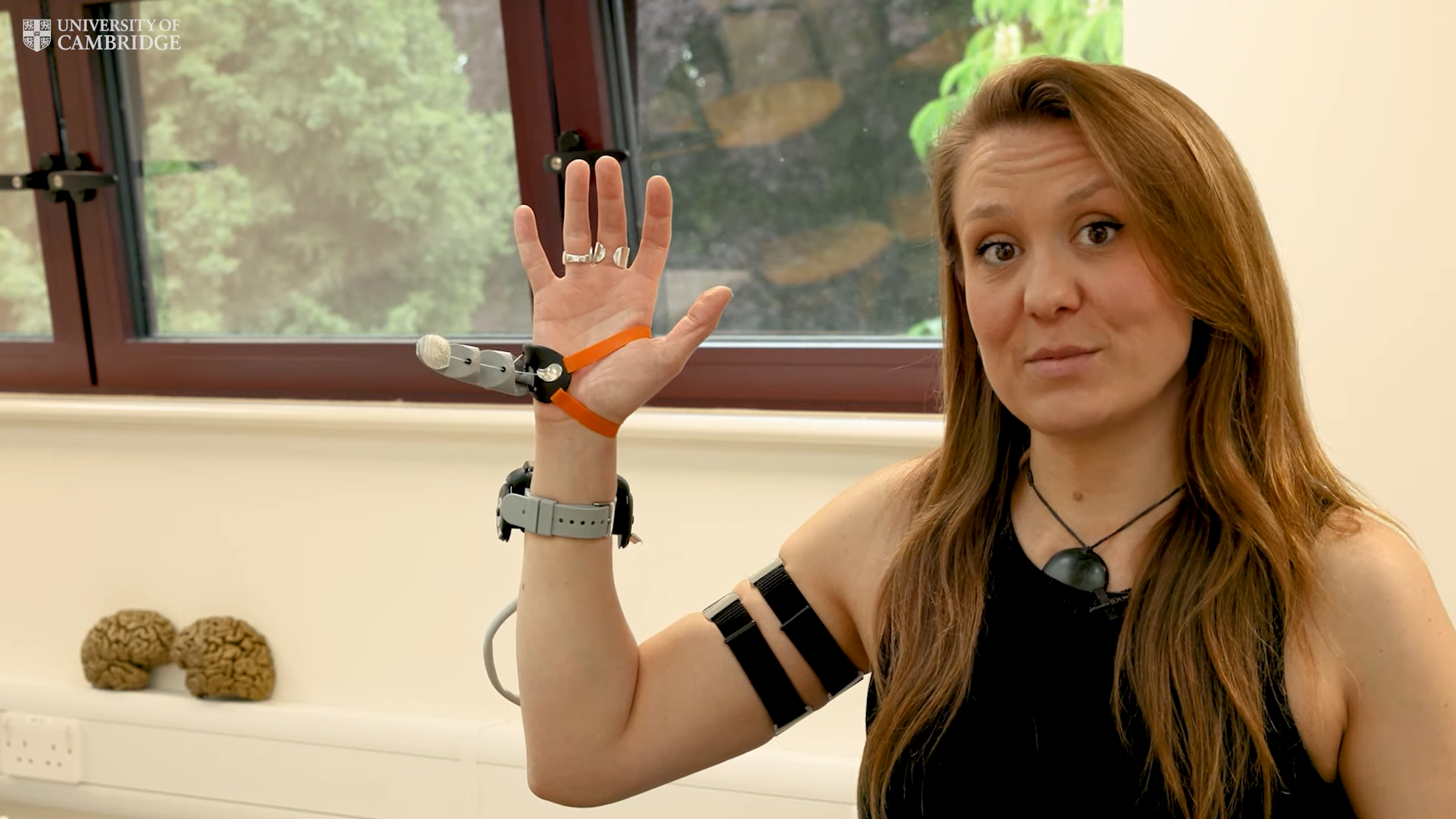This controllable prosthetic, the Third Thumb, attaches to the right hand, granting wearers the ability to perform a slew of one-handed tasks such as grasping objects, opening bottles, sorting cards, and even peeling a banana.
All that time we though image generation AI couldn’t count, really it has been telling us to invent more fingers.
Another useless prosthetic designed by 3d printing enthusiasts…
I work in orthotics and prosthetics, and the majority of the articles written about the “next gen” prosthetics are just marketing materials trying to wrangle up VC funding.
Nothing about this makes sense. First of all, no one intuitively knows how to usefully operate a “third thumb”, so the learning curve on this is going to impede its adoption. We already have a hard time getting upper limb patients to use their prosthetics, and that’s when we’re purposely mimicking something they already know.
Secondly, the utility of thumbs in general is that they are opposable. With the placement of their “thumb” the only digit you can utilize with it is your other thumb… Which means adding a thumb negates the advantage of thumbs in the first place.
Finally, and most the important aspect to any prosthetics is utility. If this is meant to help people missing their other arm…how do they get the prosthetic on in the first place? And when you do manage to get someone to help you put this on, we’re supposed to use our big toe as the action controller? Okay, so that means you can utilize this thing while walking?
Why on gods green earth did they not use myoelectrics? We’ve had them since the 70’s, why is this “cutting edge” prosthetic going backwards in technology?
Oh wait, I can tell you… Because it was designed by a 3d printing lab with no experience in actual prosthetics. 3d printers are successfully being used in prosthetics, but only when the person utilizing them has a background in prosthetics or biomedical engineering. Ends up it’s a lot easier to have a prosthetist learn about 3d printing than it is to teach a 3d printing enthusiast about a field of study that requires education in physiology, anatomy, material science, and fabrication…
Sounds like you’re scared of competing technologies taking away that precious ortho money


